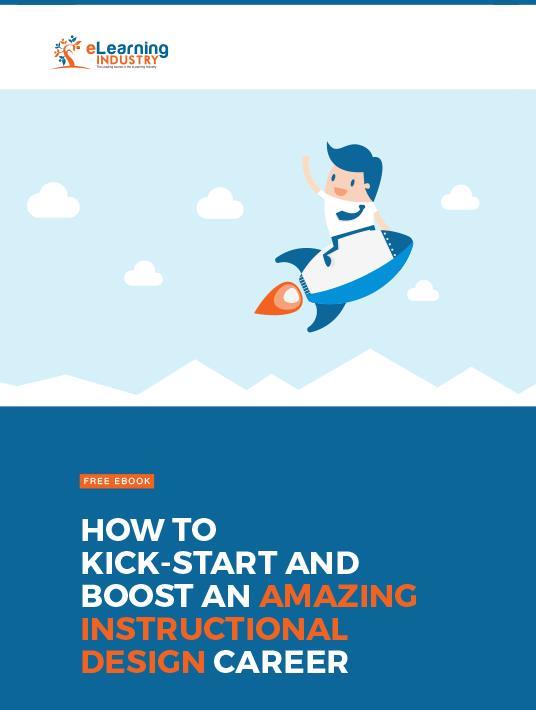How To Embark On A Successful Instructional Design Career
Maybe you have casually thought about a career in Instructional Design, but weren’t sure if it was for you. Or maybe you have tried to get into the field but didn't know where to even begin. Whatever your level of interest, there's no time like the present to embark on a rewarding career path. Instructional Design is a growing field with great opportunities for independent advancement. Read on for 6 easy ways to start your Instructional Design career.

1. Take As Many eLearning Courses As You Can
One of the best ways to figure out what Instructional Design is all about is to take some eLearning courses yourself. Getting a sense of what works and what doesn't will help you become a better Instructional Designer. You will also be able to find out what is helpful from a learner’s perspective, instead of just guessing. The more eLearning courses you take, the more ideas you will have to tap into for future eLearning projects. There are even free eLearning courses that you can use to expand your knowledge, such as MOOCs that center on Instructional Design topics and techniques. Or you can opt for a paid online training certification program to build essential skills and tech know-how. These certificates are also valuable for landing jobs in the future and you can add them to your Instructional Design portfolio.
2. Talk To Current Instructional Designers
Go on business social media and find online discussions about Instructional Design. These digital message boards will help you understand where the field is heading. They will also give you valuable insight into current Instructional Design trends. Ask questions, get to know the leaders in the field, and discover insider tips. These exchanges will also help you to learn critical details like reasonable timelines and pay rates. Arm yourself with as much information as possible before you talk to potential clients so that you are prepared and professional. You might also consider podcasts, webinars, and other eLearning events that are hosted by eLearning professionals. They can offer valuable insight into the world of Instructional Design, such as learning behaviors, Instructional Design models and theories, and other tricks of the trade.
3. Set Your Schedule
Instructional Designers have the luxury of setting their own schedules. Especially those who embark on a freelancing career path and have the ability to pick-and-choose their eLearning projects. However, you can also opt for an Instructional Design job that comes with traditional work hours. The choice is up to you. Thus, you must determine whether a full or part-time profession is best for your needs, lifestyle, and finances. You should also decide if you want to work for an existing company or go alone. Many Instructional Designers start with part-time work to get their footing, then transition into full-time employment or freelancing.
4. Find Your eLearning Content Niche
Instructional Designers get to work on content in a wide range of fields. While this is exciting, it might be a bit overwhelming. Some Instructional Designers find working with eLearning content they already understand simplifies the process. While you are encouraged to work with a variety of eLearning courses, have an idea of what you like best. As you build eLearning courses you will need to separate the online training materials and present what is most important. Already having a solid understanding of the subject can really help with this step. Research a broad range of eLearning niches to see which appeals to your personal interests, preferences, and professional background. You can also consult with current Instructional Designers to determine if their eLearning niche is a good match for your talents.
5. Become An Instructional Design Bookworm
There are countless excellent Instructional Design books. These reference guides will help to steer you in the right direction and away from common pitfalls. There are also many great books about how adults learn. Understanding how learners respond to certain content will help you to develop better eLearning courses. Read as much as you can on the subject and apply these principles throughout your designs. They will help in eLearning course development and learner satisfaction, which is the key to Instructional Design success.
6. Start With Smaller Pilot ID Projects
Now that you have a good understanding of the field through research, you need to try it out. Start small, perhaps with a microlearning module, or revamp an outdated eLearning activity to give it a modern makeover. Some businesses may even hire you to clean up existing eLearning courses or incorporate new eLearning content. These eLearning projects will help you to understand the process and workflow without getting in over your head. Find eLearning projects where you can test out your skills and see if you enjoy the field. If you succeed, you can use these clients as references to get bigger eLearning projects. Building up a track record of happy clients is a big step toward success.
Finding your Instructional Design niche is an exciting adventure. Taking eLearning projects in different fields will help you to learn what works well. It is important for you to prepare yourself and learn about the field early on. As a result, you'll be able to ask for reasonable compensation, manage clients' expectations, and run more successful eLearning projects. Do not hesitate to reach out to your peers for advice and perspective. Instructional Design is a continually evolving field that will keep you interested and engaged over the course of your Instructional Design career. The more you learn about it, the more successful you are sure to be in the field.
Getting started in an Instructional Design career will open you up to the exciting world of eLearning. Download our free eBook How To Kick Start And Boost An Amazing Instructional Design Career to discover all tips for identifying and securing your Instructional Design dream job.







